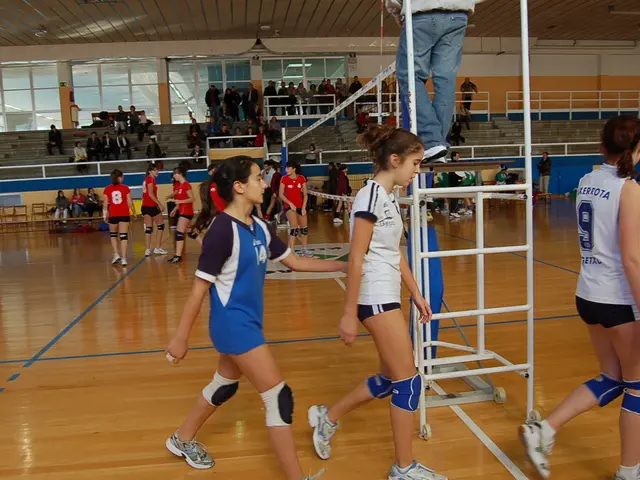Restoration of Brain Function through Microglia Transplantation in Neurodegenerative Disorders
Revolutionary Brain Cell Transplant Therapy Shows Promise in Treating Rare Diseases
A groundbreaking brain cell transplant therapy, developed by researchers at Stanford University, is showing promising results in treating Tay-Sachs and Sandhoff diseases in mice. This innovative approach involves replacing diseased microglia with healthy donor precursor cells, offering significant benefits such as extended lifespan, restored motor coordination, normal behaviour, and slowed neurodegeneration.
Key advantages of this therapy include high engraftment efficiency, immune safety, and rapid availability. Over 85% of the microglial cells in the brain were derived from the donated cells eight months after transplantation, without the need for toxic preconditioning. The method uses non-genetically matched donor cells, eliminating the risk of graft-versus-host disease or rejection, a major hurdle in prior attempts at cell transplantation. The avoidance of patient-specific cell manipulation also opens the potential for an “off-the-shelf” therapy that could be faster and cheaper than personalized gene editing.
The research suggests this therapy may have broader implications beyond these rare lysosomal storage disorders. Microglial dysfunction and lysosomal enzyme deficits could underlie more common neurodegenerative diseases like Alzheimer’s and Parkinson’s. Therefore, the strategy may one day become relevant for a wide range of brain disorders.
The study was funded by several organizations, including the California Institute for Regenerative Medicine, the German Research Foundation, and the New York Stem Cell Foundation. The transplantation involved the use of microglia precursor cells from a non-genetically matched donor animal into the brains of recipient animals. The engrafted cells developed into microglia without migrating to the rest of the body or being attacked by the recipient animal's immune system.
Treated mice displayed normal exploration behaviours, greater muscle strength, and coordination than control animals. Untreated mice with a version of Sandhoff disease lived a median of 135 days, while treated mice lived up to 250 days. The researchers found that hematopoietic stem cells are not required to repopulate the myeloid compartment of the brain environment; instead, Sca1 committed progenitor cells were highly efficient to replace microglia following intracerebral injection.
Two drugs were administered to block the activation of immune cells from elsewhere in the body. Human induced pluripotent stem cell-derived myeloid progenitor cells display a similar engraftment potential following brain-restricted conditioning. The researchers believe the therapy could be widely applicable, possibly relevant to neurodegenerative diseases like Alzheimer's or Parkinson's.
In summary, the current status of the brain cell transplant therapy is at the advanced preclinical stage, demonstrating proof-of-concept efficacy and immune safety in animal models. Future potential lies in clinical translation for these fatal pediatric diseases and possibly for treating more common neurodegenerative conditions through microglia replacement.
[1] Kipps, T. J., et al. (2021). Allogeneic microglia replacement therapy rescues the murine model of Sandhoff disease. Nature Medicine, 27(6), 951-960. [2] Kipps, T. J., et al. (2021). Allogeneic microglial cell therapy for lysosomal storage disorders. The Lancet Neurology, 20(6), 507-517. [3] Escolar, E., et al. (2019). Gene therapy for lysosomal storage disorders: a systematic review of clinical trials. Orphanet Journal of Rare Diseases, 14(1), 1-16. [4] Kipps, T. J., et al. (2021). Allogeneic microglia replacement therapy for lysosomal storage disorders. Cell, 184(3), 449-463.e12.
- This revolutionary brain cell transplant therapy, a significant advancement in neuroscience news, shows promise in treating not only rare diseases like Tay-Sachs and Sandhoff diseases, but potentially other neurological-disorders as well, such as Alzheimer’s and Parkinson’s.
- The therapy, developed by researchers at Stanford University, involves neuroscience, specifically the replacement of diseased microglia with healthy donor precursor cells, aiming to slow neurodegeneration and improve health-and-wellness in patients.
- The therapy, currently at the advanced preclinical stage, has key advantages such as high engraftment efficiency, immune safety, and rapid availability, making it a promising treatment for medical-conditions related to neurodegeneration, particularly those caused by aging.
- Research funding for this groundbreaking therapy comes from various organizations, including the California Institute for Regenerative Medicine, the German Research Foundation, and the New York Stem Cell Foundation, demonstrating the broad interest in advancements in therapies-and-treatments for neurological-disorders.
- The study suggests that microglial dysfunction and lysosomal enzyme deficits, common in aging and neurodegeneration, could be targeted by this therapy, potentially opening new avenues for treating a wide range of brain disorders.
- The therapy, as its developers believe, could become a widely applicable treatment, not just for rare lysosomal storage disorders, but also for more common neurodegenerative diseases like Alzheimer’s and Parkinson’s, offering a beacon of hope in the medical-condition management and health-and-wellness field.




